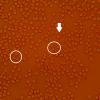There is little disagreement among cryobiologists that the biggest limiting factor to reversible organ cryopreservation is cryoprotectant toxicity. It is actually not that hard to create vitrification solutions that completely inhibit ice formation at even the slowest cooling rates. The problem is that such highly concentrated vitrification solutions are too toxic to permit recovery of complex organs. The least toxic vitrification solution for complex mammalian organs as of writing is M22. M22 is the culmination of many years of experimental and theoretical work by cryobiologist Greg Fahy and colleagues.
Studying cryoprotectant mixtures on rabbit kidney slices, Fahy and colleagues came to the following conclusions:
1. High concentrations of a cryoprotective agent (or a mixture of different cryoprotective agents)
can prevent ice formation during cooldown and warming.
2. The toxicity of some cryoprotectants can be neutralized by combining them with other cryoprotectants.
3. The non-specific toxicity of a cryoprotectant solution can be predicted by calculating a quantity (“qv*”) which is intended to measure the average hydrogen-bonding strength of the cryoprotectant polar groups with the water molecules in the solution.
4. Within limits, non-penetrating agents can reduce the exposure of cells to toxic amounts of cryoprotectants without reducing vitrification ability.
5. Synthetic “ice blockers” can be included in a vitrification mixture to reduce the concentration of toxic cryoprotective agents necessary to achieve vitrification.
While M22 is a low toxicity solution, its toxicity profile still necessitates minimizing exposure time and introduction and removal at low (subzero) temperatures. If we had a better understanding of the mechanisms of cryoprotectant toxicity, vitrification solutions with no toxicity at all could be introduced at higher temperatures and exposure times could be increased to optimize complete equilibration of the tissue with the cryoprotectant.
Two major reviews of cryoprotectant toxicity were published in the last 5 years; Gregory Fahy’s“Cryoprotectant Toxicity Neutralization” (Cryobiology, 2010) and Benjamin Best’s “Cryoprotective Toxicity: Facts, Issues, and Questions” (Rejuvenation Research, 2015).
Greg Fahy’s paper is a rigorous exposition of experimental results concerning the phenomenon of cryoprotectant toxicity neutralization. The paper is mostly limited to the discovery that DMSO can block the toxic effects of amides such as formamide. The combination of DMSO and formamide (or other amides such as urea and acetamide) is indeed one of the building blocks of M22 but this combination cannot be used without limit and the paper includes data that indicate the maximum molar concentrations (and ratios) that still permit full viability. In theory, if two (or more) cryoprotectants would completely neutralize each other’s toxicity they could be the sole components of a vitrification solution. But as the formulation of M22 shows, it is still necessary to add weak glass formers such as ethylene glycol, extracellular CPA’s, and “ice blockers” to supplement the toxicity neutralization obtained with formamide and DMSO. An important finding in Fahy’s paper is that n-methylation abolishes toxicity neutralization for amides and combining methylated amides also does not lead to toxicity neutralization between
them. In fact, Fahy found that the presence of n-methylated compounds renders even small amounts of DMSO toxic. The remainder of the paper discusses the mechanisms of cryoprotectant toxicity and Fahy now favors protein denaturation as a plausible mechanism of (non-specific) toxicity. While other cases of toxicity neutralization have been reported in the literature, no rigorous studies have been done to produce a body of knowledge that is comparable to what we know about amide-DMSO interactions.
Benjamin Best’s paper is more general in scope but discusses a lot of experimental data from other papers and also critically discusses Fahy’s work on cryoprotectant toxicity. As Ben Best points out, different (and seemingly contradictory) results do not necessarily mean that cryoprotectant toxicity is a species or cell-type dependent phenomenon. One could imagine a meta-analysis of cryobiology data in which variables such as concentration, loading and unloading protocols, exposure temperature, exposure time, and the type of viability assay are matched to ensure methodological consistency. It is also important to compare cryoprotectants at their minimum concentration to vitrify to make meaningful toxicity comparisons.
If the work at 21st Century Medicine is an indication, universal low-toxicity cryoprotective solutions should be feasible. Perhaps the most interesting part of the paper is where Best offers a critique of Greg Fahy’s “qv* hypothesis of cryoprotectant toxicity,” which aims to show that non-specfic toxicity concerns the degree to which cryoprotectants leave water available to hydrate macromolecules. This discovery allowed for the substitution of ethylene glycol for propylene glycol in Fahy’s lower toxicity vitrification solutions, despite the resulting higher CPA concentrations. Best observes, “it seems contradictory that water remains available for hydration, but not available for ice formation.” A potential rejoinder to this observation is that so called “bound water” does not participate in ice formation but can be disturbed by strong glass formers. Best also suggests a potential refinement of qv* that allows for more precise calculation of the hydrogen bonding strength of the polar groups that are used to calculate qv*. It is conceivable that such a refinement would eliminate the few remaining outliers in the data that support the qv* hypothesis. The paper also draws attention to the possibility of kosmotropic co-solvents and changes of pH and microenvironment polarity to mitigate cryoprotectant toxicity.
Neither of the papers discusses cryopreservation of the mammalian brain, but there is good reason to believe that in the case of this organ, modification of low-toxicity vitrification solutions is required. Conventional cryoprotective agents such as PG, EG, and DMSO have poor blood brain barrier (BBB) penetration and the brain may not tolerate the CPA exposure times that other organs do. For example, while M22 can be used for cryopreservation of the brain, many of its component have poor BBB penetration and PVP and the ice blockers (X-1000 and Z-1000) are assumed not to cross the (non-ischemic) BBB at all. One potential solution is to (reversibly) open the BBB with so-called BBB modifying agents like detergents or perhaps to search for cryoprotective agents that can cross the BBB.
The most fundamental question in the design of vitrification solutions remains whether it is possible at all to introduce high concentrations of cryoprotectants without creating any kind of irreversible molecular and ultrastructural adverse effects. Understanding what specific and nonspecific cryoprotectant toxicity exactly is should enable us to answer this question.
Originally published as a column (Quod incepimus conficiemus) in Cryonics magazine, August-September, 2016











































